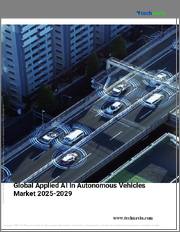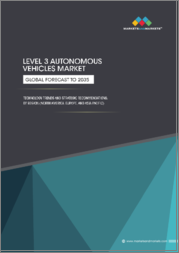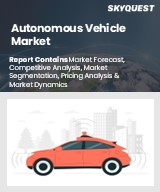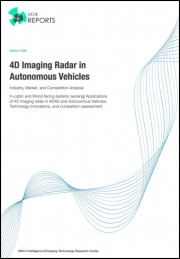
|
시장보고서
상품코드
1733261
세계의 자율주행차 시장 규모 : 자율주행 레벨별, 구성요소별, 용도별, 지역별 범위 및 예측Global Autonomous Cars Market Size By Level Of Autonomy (Level 1, Level 2, Level 3, Level 4, Level 5 ), By Component, By Application, By Geographic Scope And Forecast |
||||||
자율주행차 시장 규모 및 전망
자율주행차 시장 규모는 2024년 29억 8,000만 달러로 평가되며, 2026-2032년 동안 31.19%의 CAGR로 성장하여 2032년에는 218억 4,000만 달러에 달할 것으로 예상됩니다.
자율주행차는 자율주행차 또는 무인자동차라고도 하며, 환경을 감지하여 사람의 개입 없이 운전할 수 있는 자동차를 말합니다.
이러한 자동차는 센서와 소프트웨어를 결합하여 자동차의 제어, 내비게이션, 운전을 수행합니다.
또한, 자율주행차는 교통사고를 줄이고, 교통 흐름을 개선하며, 노인과 장애인의 이동성을 향상시키고, 에너지 소비를 줄이기 위해 개발되고 있습니다.
자율주행차 시장 역학
자율주행차 시장을 형성하는 주요 시장 역학은 다음과 같습니다.
주요 시장 촉진요인
교통 안전과 사고 감소에 대한 관심 증가 : 교통 안전에 대한 관심 증가는 자율주행차 개발의 큰 원동력이 되고 있습니다. 미국 고속도로교통안전국(NHTSA)은 중대 사고의 약 94%가 인위적인 실수로 인한 것으로 추정하고 있습니다. 자율주행 기술의 도입은 이러한 사고를 예방하기 위한 것입니다. 자율주행차는 운전의 인적 요소를 제거하는 것을 목표로 하고 있으며, 매년 수천 명의 생명을 구할 수 있습니다. 정부와 소비자들이 교통 안전을 향상시킬 수 있는 혁신적인 방법을 찾고 있기 때문에 교통 안전 향상에 중점을 두는 것이 자율주행차에 대한 수요를 촉진하고 있습니다.
인공지능 및 센서 시스템의 기술적 진보 : 인공지능(AI)과 센서 기술의 급속한 발전이 자율주행차 부문을 견인하고 있습니다. 미국 교통부는 LiDAR, 카메라, 레이더와 같은 센서 기술의 발전으로 차량이 복잡한 주변 환경을 탐색할 수 있는 능력이 향상되었다고 강조합니다. 이러한 기술을 통해 차량은 주변 상황을 인식하고 실시간으로 판단하여 전반적인 주행 성능을 향상시킬 수 있습니다. 이러한 기술이 발전함에 따라 차량에 구현되면 자율주행차 시장의 성장이 가속화될 것으로 예상됩니다.
모빌리티 솔루션에 대한 수요 증가와 교통 체증 완화 : 효율적인 모빌리티 솔루션에 대한 수요 증가가 자율주행차 시장을 견인하고 있습니다. 미국 인구조사국은 도시 인구가 증가함에 따라 주요 도시의 교통 혼잡이 증가하고 있다고 지적했습니다. 자율주행차는 교통 흐름을 개선하고, 이동 시간을 단축하고, 편리한 환승 옵션을 제공함으로써 이 문제를 해결하는 데 도움을 줄 수 있습니다. 또한, 자율주행 기술을 활용한 차량 공유 서비스의 등장은 모빌리티를 재정의하고 있으며, 효율적이고 비용 효율적인 교통 수단을 원하는 소비자에게 더욱 매력적으로 다가오고 있습니다.
주요 과제
높은 개발 및 도입 비용 : 자율주행차 개발에는 연구, 검사, 첨단 기술에 대한 막대한 투자가 필요합니다. 센서, 컴퓨팅 시스템, 소프트웨어 개발 관련 높은 비용은 특히 중소기업의 경우 보급에 걸림돌이 되고 있습니다.
윤리적, 법적 문제 : 자율주행차 도입은 사고 발생 시 책임소재, 위기 상황에서 AI 시스템의 의사결정 과정 등 복잡한 윤리적, 법적 문제를 제기합니다. 이러한 문제를 해결하는 것은 사회적 수용과 규제 당국의 승인에 매우 중요합니다.
사이버 보안 위험 : 자율주행차는 연결된 시스템과 데이터 교환에 크게 의존하기 때문에 사이버 공격에 취약할 수 있습니다. 해킹 및 무단 액세스로부터 보호하기 위한 견고한 사이버 보안 조치를 확보하는 것은 산업계에 중요한 과제입니다.
사회적 신뢰와 수용 : 자율주행차의 안전성과 신뢰성에 대한 사회적 신뢰를 얻는 것은 여전히 큰 장애물입니다. 복잡한 교통 상황에서의 통제력 상실과 AI 의사결정의 신뢰성에 대한 우려는 널리 수용되기 위해서는 해결해야 할 문제입니다.
주요 동향
5G 기술의 통합 : 5G 네트워크의 구축은 자율주행차의 기능을 크게 향상시킬 것으로 예상되며, 5G의 고속, 저지연 통신은 차량-차량(V2V) 및 차량-차량(V2I) 통신을 개선하여 안전성과 효율성을 향상시킬 수 있습니다.
HD 매핑 개발 : 고화질(HD) 지도는 도로 환경의 세부적인 센티미터 단위의 정확도를 자율주행 차량에 제공하기 위해 개발되고 있습니다. 이러한 지도는 특히 복잡한 도시 환경에서 정확한 위치 확인과 내비게이션에 필수적입니다.
센서 융합 및 첨단 인지 시스템 : LiDAR, 레이더, 카메라, 초음파 센서를 포함한 여러 센서 기술의 통합은 자율주행 차량에 보다 강력하고 신뢰할 수 있는 인지 시스템을 구축하기 위해 개선되고 있습니다. 이 센서 융합 접근 방식은 개별 센서 유형의 한계를 극복하고 차량 주변 환경에 대한 보다 종합적인 이해를 제공하는 것을 목표로 합니다.
자율주행차 시장 지역별 분석
자율주행차 시장 지역별 분석
북미
Verified Market Research에 따르면, 북미가 자율주행차 시장 예측 기간을 지배할 것으로 예상됩니다. 북미는 자율주행차 개발 및 보급에 대한 정부의 대대적인 지원을 받고 있으며, 2021년 미국 정부는 교통 시스템 개선을 위한 1조 2,000억 달러 규모의 인프라 법안을 발표했으며, 여기에는 자율주행차 기술 연구 및 개발에 대한 자금 지원도 포함되어 있습니다. 이러한 지원은 기술 혁신을 촉진하고 제조업체들이 자율주행차 개발에 투자하도록 장려하여 시장 성장을 가속화하고 있습니다.
북미 소비자들은 자동차에 첨단 기술 기능을 원하는 경향이 강해 자율주행차 수요를 견인하고 있습니다. 미국 자동차 협회(AAA)의 조사에 따르면, 미국인의 60%가 자율주행차에 관심을 보이고 있습니다. 소비자들이 첨단 기술이 접목된 현대적 교통 솔루션을 찾는 가운데, 안전 기능, 연결성, 편의성 향상에 대한 욕구가 높아지면서 이 지역의 자율주행차 도입이 가속화되고 있습니다.
또한, 북미에서는 도시 인구의 증가로 인해 교통 체증이 증가하고 있으며, 효율적인 교통 솔루션의 필요성이 대두되고 있습니다. 미국 인구조사국은 2020년 현재 미국 인구의 82% 이상이 도시에 거주하고 있다고 보고하고 있습니다. 자율주행차는 교통 흐름을 최적화하고 공유 모빌리티 서비스를 통해 도로를 달리는 차량 수를 줄임으로써 교통 문제를 완화할 수 있는 잠재적인 솔루션으로 여겨지고 있습니다. 이러한 효율적인 도시 교통에 대한 수요가 이 지역의 자율주행차 시장 성장을 견인하고 있습니다.
아시아태평양
아시아태평양은 예측 기간 동안 자율주행차 시장에서 가장 높은 성장률을 보일 것으로 예상됩니다. 아시아태평양은 도시화가 급속히 진행되고 있으며, 유엔은 2050년까지 이 지역 인구의 약 66%가 도시에 거주할 것으로 예측하고 있습니다. 이러한 급속한 도시 성장은 교통 혼잡의 증가와 혁신적인 교통 솔루션에 대한 수요 증가에 기여하고 있습니다. 자율주행차는 도시 교통을 효율적으로 관리하고, 이동성을 개선하며, 교통 체증을 완화할 수 있는 실행 가능한 솔루션으로 간주되어 이 지역의 시장 성장을 주도하고 있습니다.
중국, 일본, 싱가포르를 포함한 아시아태평양의 많은 국가들은 자율주행차 개발 및 채택을 촉진하기 위해 정부 차원에서 유리한 정책을 시행하고 있습니다. 예를 들어, 중국 정부는 자율주행 기술 발전을 우선시하는 '메이드 인 차이나 2025' 구상을 발표했습니다. 이러한 규제 프레임워크와 재정적 인센티브는 연구 개발 노력을 지원하고 이 지역의 시장 확대를 촉진하고 있습니다.
또한, 아시아태평양에서는 급속한 기술 발전과 스마트 인프라에 대한 투자가 자율주행차 시장을 크게 견인하고 있습니다. 한국과 일본과 같은 국가들은 자율주행차 기술을 통합한 첨단 통신 네트워크와 스마트 시티 프로젝트 개발을 주도하고 있습니다. 예를 들어, 5G 네트워크의 구축은 차량 간(V2X) 통신을 강화하여 자율주행차의 안전성과 효율성을 향상시키고 시장 성장을 더욱 촉진할 것으로 예상됩니다.
자율주행차 시장 : 부문 분석
자율주행차 시장은 자율주행 수준, 부품, 용도, 지역별로 세분화됩니다.
자율주행차 시장 : 자율주행 수준별
- 레벨 1(운전자 지원)
- 레벨 2(부분 자동화)
- 레벨 3(조건부 자동화)
- 레벨 4(고도의 자동화)
- 레벨 5(완전 자동화)
자율성 수준에 따라 시장은 레벨 1(운전 지원), 레벨 2(부분 자동화), 레벨 3(조건부 자동화), 레벨 4(고도 자동화), 레벨 5(완전 자동화)로 구분됩니다. 레벨 2 부문은 일반 소비자 차량에 널리 채택되고 ADAS(첨단 운전자 보조 시스템)의 활용 가능성이 높아짐에 따라 당분간 시장을 독점할 것으로 예상됩니다. 레벨2 기술은 어댑티브 크루즈 컨트롤, 차선 유지 보조 등의 기능을 가능하게 하여 차량을 완전히 제어하지 않고도 안전성과 편의성을 향상시킵니다. 자동차 제조업체들이 레벨 2 기능을 차량에 탑재함에 따라, 이러한 기능에 대한 소비자의 수용과 수요가 증가하고 있습니다. 이 부문은 가격과 기능의 균형으로 인해 제조업체와 소비자 모두에게 매력적인 시장으로 부상하고 있습니다.
자율주행차 시장, 부품별
- 하드웨어
- 소프트웨어
- 서비스
구성요소에 따라 시장은 하드웨어, 소프트웨어, 서비스로 구분됩니다. 하드웨어 부문은 자율주행차 운행에 있어 다양한 물리적 구성요소가 중요한 역할을 하기 때문에 현재 시장을 독점하고 있는 것으로 추정됩니다. 주요 하드웨어 구성요소에는 센서, 카메라, LiDAR, 레이더, 프로세싱 유닛 등이 포함되며, 안전한 내비게이션과 운행에 필요한 실시간 데이터 수집 및 분석을 가능하게 하는 데 필수적인 요소입니다. 기술의 발전과 함께 정교한 하드웨어 솔루션에 대한 수요가 증가하고 있으며, 자동차 제조업체와 기술 기업에서 많은 투자가 이루어지고 있습니다. 자율주행 시스템이 복잡해짐에 따라 다양한 환경에서 안정적으로 작동할 수 있는 고품질 하드웨어가 요구되고 있습니다.
자율주행차 시장,용도별
- 교통수단
- 국방
자율주행차 시장은 용도별로 운송 부문과 방위 부문으로 구분됩니다. 도시 및 교외 지역에서 효율적이고 안전한 모빌리티 솔루션에 대한 수요가 증가함에 따라 예측 기간 동안 운송 부문이 시장을 주도할 것으로 예상됩니다. 자율주행 차량은 교통 체증, 주차 공간 부족, 안전 대책 강화의 필요성 등 다양한 교통 문제를 해결하기 위해 개발되고 있습니다. 차량 공유 서비스 및 라스트 마일 배송 솔루션의 부상으로 교통 부문에서 자율주행차 도입이 가속화되고 있습니다. 주요 자동차 제조업체와 기술 기업들은 완전 자율주행 차량을 시장에 출시하기 위한 연구개발에 적극적으로 투자하고 있으며, 전체 교통 생태계를 강화하기 위한 노력을 기울이고 있습니다.
주요 진출 기업
- 자율주행차 시장 조사 보고서는 세계 시장에 초점을 맞춘 귀중한 인사이트를 담고 있습니다. Waymo LLC(Alphabet Inc. 자회사),Tesla Inc.,General Motors Company(Cruise LLC),Ford Motor Company(Argo AI),Baidu Inc. Corporation, Volkswagen AG, BMW AG, Daimler AG(Mercedes-Benz), Nvidia Corporation입니다.
당사의 시장 분석에는 이러한 주요 기업만을 다루는 섹션이 있으며, 애널리스트가 제품 벤치마킹 및 SWOT 분석과 함께 모든 주요 기업의 재무 제표에 대한 인사이트를 제공합니다. 경쟁 상황 섹션에는 위의 진입자들의 세계 주요 개발 전략, 시장 점유율, 시장 순위 분석도 포함되어 있습니다.
- 자율주행차 시장의 최근 동향
- 2023년 3월, Waymo는 애리조나 주 피닉스에서 완전 자율주행 라이드 헤일링 서비스를 시작하며 영업 지역을 확장하고 도시 모빌리티 솔루션에 큰 진전을 이루었습니다. 이 서비스는 첨단 AI 기술이 탑재된 자율주행 차량을 활용하여 승객의 안전을 보장하면서 복잡한 교통 상황을 헤쳐나갑니다.
- 2023년 1월, 제너럴 모터스(General Motors)는 공유 모빌리티를 위해 설계된 최신 전기 자율주행차 크루즈 오리진(Cruise Origin)을 발표했습니다. 이 순수 전기 무인 차량은 승차 공유 서비스에 효율적이고 무공해 솔루션을 제공함으로써 도시 교통을 강화하는 것을 목표로 하고 있으며, 지속가능하고 혁신적인 교통 수단에 대한 GM의 약속을 보여줍니다.
- 2022년 10월, 테슬라는 완전자율주행(FSD) 소프트웨어의 업데이트 버전을 발표하여 내비게이션과 장애물 감지 기능을 향상시켰습니다. 이 업그레이드는 테슬라 자율주행차의 전반적인 성능을 향상시켜 안전 문제와 규제 요건을 충족시키면서 레벨 5 수준의 자율주행에 더 가까이 다가갈 수 있도록 했습니다.
목차
제1장 세계의 자율주행차 시장 소개
- 시장 개요
- 조사 범위
- 가정
제2장 주요 요약
제3장 VERIFIED MARKET RESEARCH 조사 방법
- 데이터 마이닝
- 검증
- 1차 자료
- 데이터 소스 리스트
제4장 자율주행차 세계 시장 전망
- 개요
- 시장 역학
- 성장 촉진요인
- 성장 억제요인
- 기회
- Porter's Five Forces 모델
- 밸류체인 분석
제5장 자율주행차 세계 시장 : 자율주행 레벨별
- 개요
- 레벨 1(드라이버 지원)
- 레벨 2(부분적 자동화)
- 레벨 3(조건부 자동화)
- 레벨 4(고도 자동화)
- 레벨 5(완전 자동화)
제6장 자율주행차 세계 시장 : 구성요소별
- 개요
- 하드웨어
- 소프트웨어
- 서비스
제7장 자율주행차 세계 시장 : 용도별
- 개요
- 운송
- 방위
제8장 자율주행차 세계 시장 : 지역별
- 개요
- 북미
- 미국
- 캐나다
- 멕시코
- 유럽
- 독일
- 영국
- 프랑스
- 기타 유럽
- 아시아태평양
- 중국
- 일본
- 인도
- 기타 아시아태평양
- 기타
- 라틴아메리카
- 중동
제9장 세계의 자율주행차 시장 경쟁 구도
- 개요
- 각사의 시장 순위
- 주요 개발 전략
제10장 기업 개요
- Waymo LLC(Alphabet Inc.의 자회사)
- Tesla Inc.
- General Motors Company(Cruise LLC)
- Ford Motor Company(Argo AI)
- Baidu Inc.
- Toyota Motor Corporation
- Volkswagen AG
- BMW AG
- Daimler AG(Mercedes-Benz)
- Nvidia Corporation
제11장 부록
- 관련 조사
Autonomous Cars Market Size And Forecast
Autonomous Cars Market size was valued at USD 2.98 Billion in 2024 and is projected to reach USD 21.84 Billion by 2032, growing at a CAGR of 31.19% from 2026-2032.
Autonomous cars, also known as self-driving cars or driverless cars, are vehicles capable of sensing their environment and operating without human involvement.
These vehicles combine sensors and software to control, navigate, and drive the vehicle.
Furthermore, autonomous cars are being developed to reduce traffic accidents, improve traffic flow, enhance mobility for the elderly and disabled, and reduce energy consumption.
Autonomous Cars Market Dynamics
The key market dynamics that are shaping the Autonomous Cars Market include:
Key Market Drivers
Increasing focus on road safety and accident reduction: The growing concern about road safety is a major force behind the development of self-driving cars. The National Highway Traffic Safety Administration (NHTSA) estimates that human error causes around 94% of major crashes. The incorporation of autonomous driving technology intends to prevent these incidents, as self-driving cars are intended to eliminate the human factor in driving, potentially saving thousands of lives each year. The focus on improving road safety is the driving demand for self-driving cars as governments and consumers seek innovative ways to improve transportation safety.
Technological advancements in artificial intelligence and sensor systems: Rapid breakthroughs in artificial intelligence (AI) and sensor technology are propelling the autonomous vehicle sector. The U.S. Department of Transportation emphasizes that advances in sensor technology, including LIDAR, cameras, and radar, have increased vehicles' capacity to navigate complex surroundings. These technologies allow vehicles to perceive their surroundings, make real-time judgments, and improve overall driving performance. As these technologies advance, their implementation into vehicles is projected to accelerate the growth of the autonomous vehicle market.
Growing demand for mobility solutions and reduced traffic congestion: The growing demand for efficient mobility solutions is boosting the autonomous vehicle market. The United States Census Bureau indicated that urban populations are growing, resulting in increased traffic congestion in major cities. Autonomous vehicles assist address this issue by improving traffic flow, shortening travel times, and providing convenient transit options. Furthermore, the rise of ride-sharing services that use self-driving technology is redefining mobility, making these vehicles more appealing to consumers seeking efficient and cost-effective transportation options.
Key Challenges:
High Development and Implementation Costs: The development of autonomous vehicles requires significant investment in research, testing, and advanced technologies. The high costs associated with sensors, computing systems, and software development pose a challenge to widespread adoption, particularly for smaller companies.
Ethical and Legal Concerns: The deployment of autonomous vehicles raises complex ethical and legal questions, such as liability in the event of accidents and the decision-making processes of AI systems in critical situations. Resolving these issues is crucial for public acceptance and regulatory approval.
Cybersecurity Risks: As autonomous vehicles rely heavily on connected systems and data exchange, they are potentially vulnerable to cyber-attacks. Ensuring robust cybersecurity measures to protect against hacking and unauthorized access is a significant challenge for the industry.
Public Trust and Acceptance: Gaining public trust in the safety and reliability of autonomous vehicles remains a significant hurdle. Concerns about the loss of control and the reliability of AI decision-making in complex traffic situations need to be addressed to achieve widespread acceptance.
Key Trends:
Integration of 5G Technology: The rollout of 5G networks is expected to significantly enhance the capabilities of autonomous vehicles. The high-speed, low-latency communication enabled by 5G will allow for better vehicle-to-vehicle (V2V) and vehicle-to-infrastructure (V2I) communication, improving safety and efficiency.
Development of HD Mapping: High-definition (HD) maps are being developed to provide autonomous vehicles with detailed, centimeter-level accuracy of road environments. These maps are crucial for precise localization and navigation, especially in complex urban environments.
Sensor Fusion and Advanced Perception Systems: The integration of multiple sensor technologies, including LiDAR, radar, cameras, and ultrasonic sensors, is being refined to create more robust and reliable perception systems for autonomous vehicles. This sensor fusion approach aims to overcome the limitations of individual sensor types and provide a more comprehensive understanding of the vehicle's surroundings.
Autonomous Cars Market Regional Analysis
The regional analysis of the Autonomous Cars Market:
North America
According to Verified Market Research, North America is estimated to dominate the Autonomous Cars Market over the forecast period. The North American region benefits from significant government backing for the development and deployment of autonomous vehicles. In 2021, the U.S. government announced a $1.2 trillion infrastructure bill aimed at improving transportation systems, which includes funding for research and development of autonomous vehicle technologies. This support fosters innovation, encouraging manufacturers to invest in autonomous vehicle development and accelerating market growth.
North American consumers exhibit a strong preference for advanced technological features in their vehicles, driving demand for autonomous cars. According to a survey by the American Automobile Association (AAA), nearly 60% of Americans expressed interest in self-driving cars. The increasing desire for enhanced safety features, connectivity, and convenience is propelling the adoption of autonomous vehicles in the region, as consumers seek modern transportation solutions that incorporate cutting-edge technology.
Furthermore, the rising urban population in North America is contributing to increased traffic congestion, creating a need for efficient transportation solutions. The U.S. Census Bureau reported that over 82% of the U.S. population lived in urban areas as of 2020. Autonomous vehicles are seen as a potential solution to alleviate traffic issues by optimizing traffic flow and reducing the number of vehicles on the road through shared mobility services. This demand for efficient urban transportation is driving the growth of the Autonomous Cars Market in the region.
Asia Pacific
The Asia Pacific region is estimated to exhibit the highest growth rate in the Autonomous Cars Market during the forecast period. The Asia-Pacific region is experiencing significant urbanization, with the United Nations projecting that by 2050, around 66% of the population in the region will reside in urban areas. This rapid urban growth contributes to increased traffic congestion and demand for innovative transportation solutions. Autonomous vehicles are viewed as a viable solution to manage urban traffic effectively, improve mobility, and reduce congestion, thus driving the market's growth in this region.
Many countries in the Asia-Pacific region, including China, Japan, and Singapore, have implemented favorable government policies to promote the development and adoption of autonomous vehicles. For instance, the Chinese government announced its "Made in China 2025" initiative, which prioritizes the advancement of autonomous driving technology. These regulatory frameworks and financial incentives support research and development efforts, facilitating market expansion in the region.
Furthermore, the Asia-Pacific region is witnessing rapid technological advancements and investments in smart infrastructure, which significantly drive the Autonomous Cars Market. Countries like South Korea and Japan are leading the way in developing advanced communication networks and smart city projects that integrate autonomous vehicle technology. The deployment of 5G networks, for example, is expected to enhance vehicle-to-everything (V2X) communication, improving the safety and efficiency of autonomous vehicles and further stimulating market growth.
Autonomous Cars Market: Segmentation Analysis
The Autonomous Cars Market is Segmented based on Level of Autonomy, Component, Application, and Geography.
Autonomous Cars Market, By Level of Autonomy
- Level 1 (Driver Assistance)
- Level 2 (Partial Automation)
- Level 3 (Conditional Automation)
- Level 4 (High Automation)
- Level 5 (Full Automation)
Based on the Level of Autonomy, the market is segmented into Level 1 (Driver Assistance), Level 2 (Partial Automation), Level 3 (Conditional Automation), Level 4 (High Automation), and Level 5 (Full Automation). The level 2 segment is estimated to dominate the market in the near term due to its widespread adoption of consumer vehicles and the growing availability of advanced driver assistance systems (ADAS). Level 2 technology enables features such as adaptive cruise control and lane-keeping assistance, providing enhanced safety and convenience without fully taking control of the vehicle. As automotive manufacturers increasingly integrate Level 2 capabilities into their models, consumer acceptance and demand for such features are on the rise. This segment benefits from a balance of affordability and functionality, making it attractive to both manufacturers and consumers.
Autonomous Cars Market, By Component
- Hardware
- Software
- Services
Based on Component, the market is segmented into Hardware, Software, and Services. The hardware segment is currently estimated to dominate the market due to the essential role that various physical components play in the operation of autonomous vehicles. Key hardware components include sensors, cameras, LiDAR, radar, and processing units, all of which are critical for enabling real-time data collection and analysis necessary for safe navigation and operation. As technology advances, the demand for sophisticated hardware solutions is increasing, leading to significant investments from automotive manufacturers and technology companies. The growing complexity of autonomous systems requires high-quality hardware that performs reliably in diverse environments.
Autonomous Cars Market, By Application
- Transportation
- Defense
Based on Application, the market is segmented into Transportation, and Defense. The transportation segment is estimated to dominate the market throughout the forecast period due to the increasing demand for efficient and safe mobility solutions in urban and suburban areas. Autonomous vehicles are developed to address various transportation challenges, such as traffic congestion, parking shortages, and the need for enhanced safety measures. With the rise of ride-sharing services and last-mile delivery solutions, the adoption of autonomous vehicles in the transportation sector is accelerating. Major automotive manufacturers and technology companies are actively investing in research and development to bring fully autonomous vehicles to market, enhancing the overall transportation ecosystem.
Key Players
- The "Autonomous Cars Market" study report will provide valuable insight with an emphasis on the global market. The major players in the market are Waymo LLC (a subsidiary of Alphabet Inc.), Tesla Inc., General Motors Company (Cruise LLC), Ford Motor Company (Argo AI), Baidu Inc., Toyota Motor Corporation, Volkswagen AG, BMW AG, Daimler AG (Mercedes-Benz), and Nvidia Corporation.
Our market analysis also entails a section solely dedicated to such major players wherein our analysts provide an insight into the financial statements of all the major players, along with product benchmarking and SWOT analysis. The competitive landscape section also includes key development strategies, market share, and market ranking analysis of the above-mentioned players globally.
- Autonomous Cars Market Recent Developments
- In March 2023, Waymo launched its fully autonomous ride-hailing service in Phoenix, Arizona, expanding its operational territory and making significant strides in urban mobility solutions. This service utilizes a fleet of self-driving vehicles equipped with advanced AI technology to navigate complex traffic situations while ensuring passenger safety.
- In January 2023, General Motors unveiled its latest electric autonomous vehicle, the Cruise Origin, designed for shared mobility. This all-electric, driverless vehicle aims to enhance urban transportation by providing an efficient, zero-emission solution for ridesharing services, demonstrating GM's commitment to sustainable and innovative transportation options.
- In October 2022, Tesla introduced an updated version of its Full Self-Driving (FSD) software, enabling improved navigation and obstacle detection capabilities. This upgrade enhances the overall performance of Tesla's autonomous vehicles, bringing them closer to achieving Level 5 automation while addressing safety concerns and regulatory requirements.
TABLE OF CONTENTS
1 INTRODUCTION OF GLOBAL AUTONOMOUS CARS MARKET
- 1.1 Overview of the Market
- 1.2 Scope of Report
- 1.3 Assumptions
2 EXECUTIVE SUMMARY
3 RESEARCH METHODOLOGY OF VERIFIED MARKET RESEARCH
- 3.1 Data Mining
- 3.2 Validation
- 3.3 Primary Interviews
- 3.4 List of Data Sources
4 GLOBAL AUTONOMOUS CARS MARKET OUTLOOK
- 4.1 Overview
- 4.2 Market Dynamics
- 4.2.1 Drivers
- 4.2.2 Restraints
- 4.2.3 Opportunities
- 4.3 Porters Five Force Model
- 4.4 Value Chain Analysis
5 GLOBAL AUTONOMOUS CARS MARKET, BY LEVEL OF AUTONOMY
- 5.1 Overview
- 5.2 Level1 (Driver Assistance)
- 5.3 Level 2 (Partial Automation)
- 5.4 Level 3 (Conditional Automation)
- 5.5 Level 4 (High Automation)
- 5.6 Level 5 (Full Automation)
6 GLOBAL AUTONOMOUS CARS MARKET, BY COMPONENT
- 6.1 Overview
- 6.2 Hardware
- 6.3 Software
- 6.4 Services
7 GLOBAL AUTONOMOUS CARS MARKET, BY APPLICATION
- 7.1 Overview
- 7.2 Transportation
- 7.3 Defense
8 GLOBAL AUTONOMOUS CARS MARKET, BY GEOGRAPHY
- 8.1 Overview
- 8.2 North America
- 8.2.1 U.S.
- 8.2.2 Canada
- 8.2.3 Mexico
- 8.3 Europe
- 8.3.1 Germany
- 8.3.2 U.K.
- 8.3.3 France
- 8.3.4 Rest of Europe
- 8.4 Asia Pacific
- 8.4.1 China
- 8.4.2 Japan
- 8.4.3 India
- 8.4.4 Rest of Asia Pacific
- 8.5 Rest of the World
- 8.5.1 Latin America
- 8.5.2 Middle East
9 GLOBAL AUTONOMOUS CARS MARKET COMPETITIVE LANDSCAPE
- 9.1 Overview
- 9.2 Company Market Ranking
- 9.3 Key Development Strategies
10 COMPANY PROFILES
- 10.1 Waymo LLC (a subsidiary of Alphabet Inc.)
- 10.1.1 Overview
- 10.1.2 Financial Performance
- 10.1.3 Product Outlook
- 10.1.4 Key Developments
- 10.2 Tesla Inc.
- 10.2.1 Overview
- 10.2.2 Financial Performance
- 10.2.3 Product Outlook
- 10.2.4 Key Developments
- 10.3 General Motors Company (Cruise LLC)
- 10.3.1 Overview
- 10.3.2 Financial Performance
- 10.3.3 Product Outlook
- 10.3.4 Key Developments
- 10.4 Ford Motor Company (Argo AI)
- 10.4.1 Overview
- 10.4.2 Financial Performance
- 10.4.3 Product Outlook
- 10.4.4 Key Developments
- 10.5 Baidu Inc.
- 10.5.1 Overview
- 10.5.2 Financial Performance
- 10.5.3 Product Outlook
- 10.5.4 Key Developments
- 10.6 Toyota Motor Corporation
- 10.6.1 Overview
- 10.6.2 Financial Performance
- 10.6.3 Product Outlook
- 10.6.4 Key Developments
- 10.7 Volkswagen AG
- 10.7.1 Overview
- 10.7.2 Financial Performance
- 10.7.3 Product Outlook
- 10.7.4 Key Developments
- 10.8 BMW AG
- 10.8.1 Overview
- 10.8.2 Financial Performance
- 10.8.3 Product Outlook
- 10.8.4 Key Developments
- 10.9 Daimler AG (Mercedes-Benz)
- 10.9.1 Overview
- 10.9.2 Financial Performance
- 10.9.3 Product Outlook
- 10.9.4 Key Developments
- 10.10 Nvidia Corporation
- 10.10.1 Overview
- 10.10.2 Financial Performance
- 10.10.3 Product Outlook
- 10.10.4 Key Developments
11 Appendix
- 11.1 Related Research



















